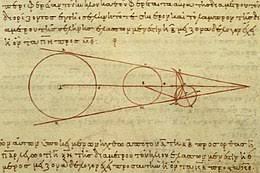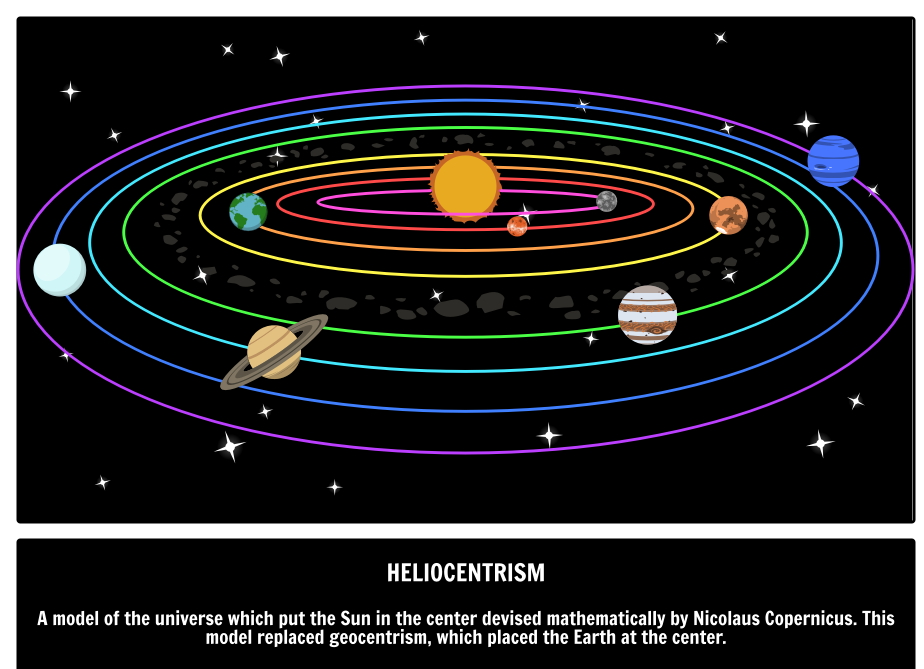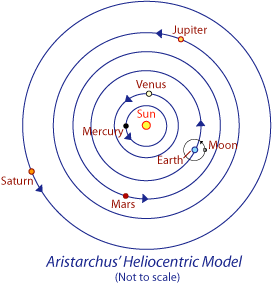In a recent article, I mentioned Galileo and his idea of heliocentrism. Heliocentrism is the idea that the Earth revolves around the Sun. It is opposed to the geocentric idea which claims that the Sun and other planets revolve around the Earth.
Galileo posed heliocentrism in the 17th century, and shortly after doing so, his life was threatened by the Church. The Roman Inquisition investigated the idea and claimed that a heliocentric model of the heavens was directly opposed to the Holy Scripture and was heretical in nature.
Thus, Galileo was forced to abandon the idea of heliocentrism on the threat of death.
As much as we might like to believe that we are at the center of the universe, and that everything revolves around us, that notion is quite simply false. My fiancé likes to remind me of this daily…
Just like many other revolutionary ideas, it should come as no surprise that the heliocentric model of astronomy has roots in ancient Greek philosophy.
One might think that since astronomy falls within the contemporary discipline of science, that it must fall within the ancient Greek discipline of science, but science, up until the 19th century, was simply known as natural philosophy.
Greek astronomy began sometime around the 5th century BCE and was rather sophisticated when one considers the lack of technology and scientific instruments available to the ancient Greeks.
Nearly 2,000 years before Galileo, Aristarchus of Samos posited the notion of heliocentrism. Aristarchus lived from 310 – 230 BCE. He was a mathematician, astronomer, and natural philosopher.
Aristarchus broke with the popular trend which adhered to the geocentric model of astronomy. Both Plato and Aristotle believed in and defended the theory of geocentrism.
To put it into perspective, arguing against Plato and Aristotle in ancient Greece would be akin to some contemporary scientist arguing against Albert Einstein or Charles Darwin. There is nothing inherently wrong with opposing their ideas, but you better have a pretty good argument for your opposition if you want to be taken seriously.

A 10th century AD copy of Aristarchus’ calculations regarding the relative size of the Sun, Earth, and Moon. (From left to right.)
Aristarchus capitalized on a few problems which plagued geocentrism. These problems included the brightness of planets and their apparent change in movement through the night sky, known as retrograde motion.
Although Aristarchus posed the heliocentric theory of the heavens, he also wrote an entire book of astronomy from the geocentric point of view. Scholars debate the implications of this, some claim that he only came to the idea of heliocentrism after writing his book on geocentrism. Others believe that it is possible that he abandoned the notion of heliocentrism because of its contradictory nature, and instead pursued geocentrism as the true theory of the heavens.
We could speculate about such matters to no end, so let us leave this aside and focus on what we know about Aristarchus.
Through the geometrical analysis of Earth’s shadow on the moon during a lunar eclipse, Aristarchus concluded that the Earth is probably smaller than the Sun. He also held an axiomatic principle which claimed that smaller objects orbit larger ones. Therefore, it would make sense that the Earth revolved around the Sun.
If this wasn’t revolutionary enough, Aristarchus also believed that the stars were distant suns, and that the universe was much bigger than previous astronomical models had predicted.
Most of this was denied legitimacy by mainstream Greek philosophy and mathematics. For instance, the only way Aristarchus could provide adequate proof for heliocentrism was through the idea that the Earth follows an elliptical orbit, rather than a circular one. This was a radical notion and not given much credit by his contemporaries.
Proof to his idea that the stars are distant suns could only be provided by observation via telescope. This is because of the phenomenon known as stellar parallax, which has to do with the movement of stars relative to one another as the Earth moves around the Sun. Stellar parallax is only observable using an instrument such as the telescope.
Like Democritus and his atomic theory of the universe, or the many theories of evolution posed by Anaximander, Empedocles, and Lucretius, Aristarchus’ mind was far beyond the available scientific or technological instruments that were required to prove such speculative theories.
It would take roughly 2,000 years for some of these paradigmatic ideas to gain observational proof.
One must ponder the source of such genius in ancient Greece, and wonder what other ancient theories we might find evidence for in the future…












No comments yet. You should be kind and add one!
Our apologies, you must be logged in to post a comment.